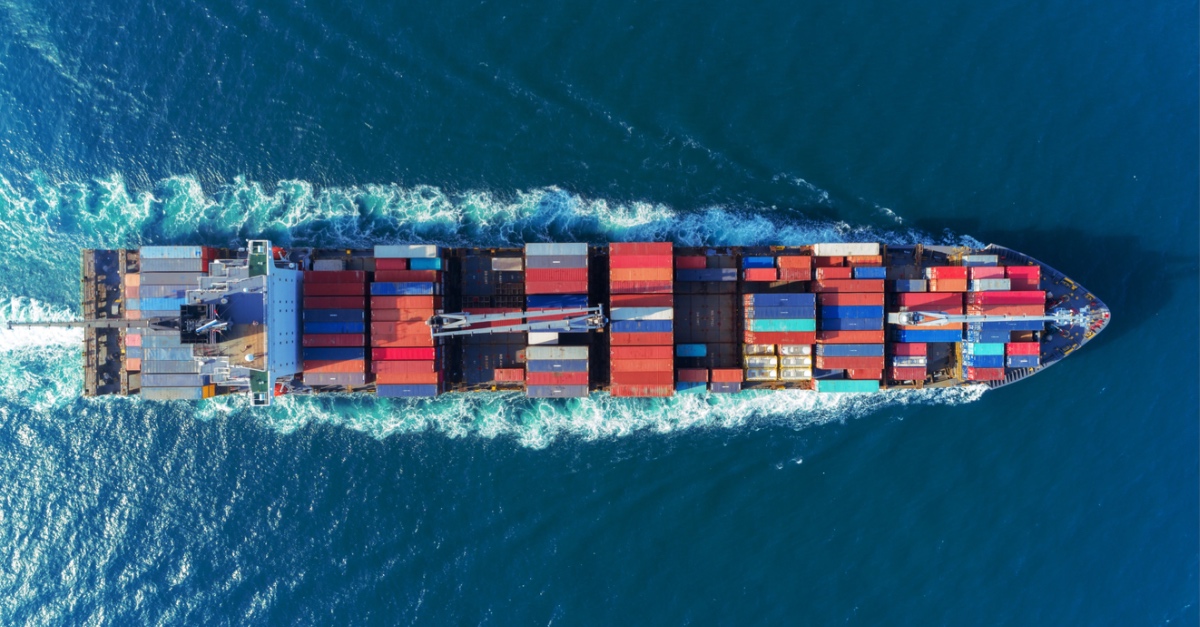Shipments have surged in the wake of potential tariffs and labor disruptions in the East and Gulf Coast ports. As a result, container rates in the Trans-Pacific have significantly increased for December. Meanwhile, Congress aims to pass a bipartisan bill to expand the U.S.-flag commercial shipping fleet amid security concerns and growing trade tensions with China. All of this is happening as the container shipping sector braces for a turbulent new year.
Continue reading for the latest news, trends, and insights shaping the freight industry.
Container Shipping Rates Shift Amid Strike and Tariff Concerns
Trans-Pacific container rates rose noticeably in December, driven by anticipation of labor disruptions and upcoming tariff changes. The Freightos Baltic Index indicated a 10% increase in Asia-U.S. West Coast rates, reaching $4,301 per forty-foot equivalent unit (FEU), while East Coast rates rose by 13% to $5,814 per FEU. These gains reflect an earlier shipment surge to avoid potential labor strikes and tariff hikes.
However, political support for dockworker unions may mitigate concerns about prolonged labor disruptions against semi-automation proposals. Meanwhile, Asia-North Europe and Asia-Mediterranean rates slightly decreased, dropping 5% and 2%, respectively. Although slightly down, these rates remain significantly higher than in earlier months due to increased demand ahead of the Lunar New Year and rerouted shipments through the Red Sea. Weather-related congestion at some Asian ports has further contributed to rate fluctuations.
Bipartisan Push to Boost U.S.-Flag Shipping Fleet Amid Rising Tensions with China
New bipartisan legislation in Congress aims to significantly expand the U.S.-flag commercial shipping fleet, citing national security concerns and growing tensions with China. The bills propose requiring U.S.-owned, U.S.-built, and U.S.-crewed vessels to handle up to 10% of Chinese imports into the U.S., with the quota increasing by one percentage point annually over a decade.
The initiative reflects a renewed political effort to enhance U.S. maritime capacity. It seeks to reverse the decline of the U.S.-flag fleet, which currently stands at around 80 ships, compared to over 5,500 vessels flagged by China. The goal is to grow this fleet to 250 ships within ten years. The legislation also mandates that all government cargoes be carried on U.S.-flagged vessels, replacing the loosely enforced 50% requirement.
Multiple Challenges Loom for U.S. Container Shipping as New Year Approaches
The U.S. container shipping sector is bracing for a turbulent start to the New Year, with three major disruptions on the horizon. First, the International Longshoremen’s Association (ILA) is poised for a potential strike at East and Gulf Coast ports by mid-January, threatening supply chain movement. Second, Donald Trump’s second term as president could reignite tariff tensions, particularly on Chinese goods, with the potential for higher duties and targeting imports from Mexico and Canada.
Third, February will launch two major shipping alliances: the Gemini Cooperation, led by Maersk and Hapag-Lloyd, and the Premier alliance, involving carriers like ONE and HMM. These alliances introduce operational complexities, including adjustments to fleet deployment and transshipment processes, which could temporarily reduce capacity. Analysts warn that the limited availability of idle ships leaves little room for error during this transition period.
U.S. Consumer Sentiment Rises in December Amid Inflation Concerns
According to the University of Michigan, U.S. consumer sentiment improved for the fifth consecutive month in December, reaching 74. This marks an increase from 71.8 in November, though it falls slightly below economists’ expectations of 74.2. Consumers anticipate prices increasing by 2.8% over the next year and 3% annually over the next decade.
Survey director Joanne Hsu noted an uptick in consumers’ belief that purchasing durable goods now is prudent to avoid potential cost hikes in the future. Sentiment among Republicans climbed to 85.4, reflecting post-election optimism, while the sentiment for Democrats declined to 69.6. Independents also reported a notable boost in confidence. The current conditions index reached an eight-month high, while the expectations index showed a slight dip.
Costco Prepares for Tariff Challenges and Shifts in Consumer Spending
Costco Wholesale is taking proactive steps to manage the anticipated impact of tariffs amid uncertainties regarding their scope and timing. CFO Gary Millerchip shared that the company is pulling forward inventory purchases, exploring alternative sourcing options, and adjusting product selections. While tariffs are seen as a cost-raising factor, Costco believes its team is equipped to handle such challenges effectively, similar to past experiences.
Millerchip highlighted that a smaller portion of Costco’s business, primarily within imported non-food items, would be directly impacted by potential tariffs. He also noted shifts in consumer behavior, with increased demand for both budget-friendly and premium meat cuts and strong sales in produce and furniture. Trends indicate a preference for home-prepared food over dining out, potentially driven by inflation differences.
Transportation Never Sleeps With COGISTICS Transportation
We’re not just the average logistics provider in the market; we transform logistics challenges from air, land, and ocean freight operations into strategic advantages around the clock and worldwide. Whether consolidating shipments or pushing expedited freight, you can trust COGISTICS Transportation’s 3PL solutions to have your back. Leveraging over 30 years of expertise, we provide innovative, technology-driven logistics solutions by land, air, and sea — around the clock, around the world. Connect with us today to see the difference.




